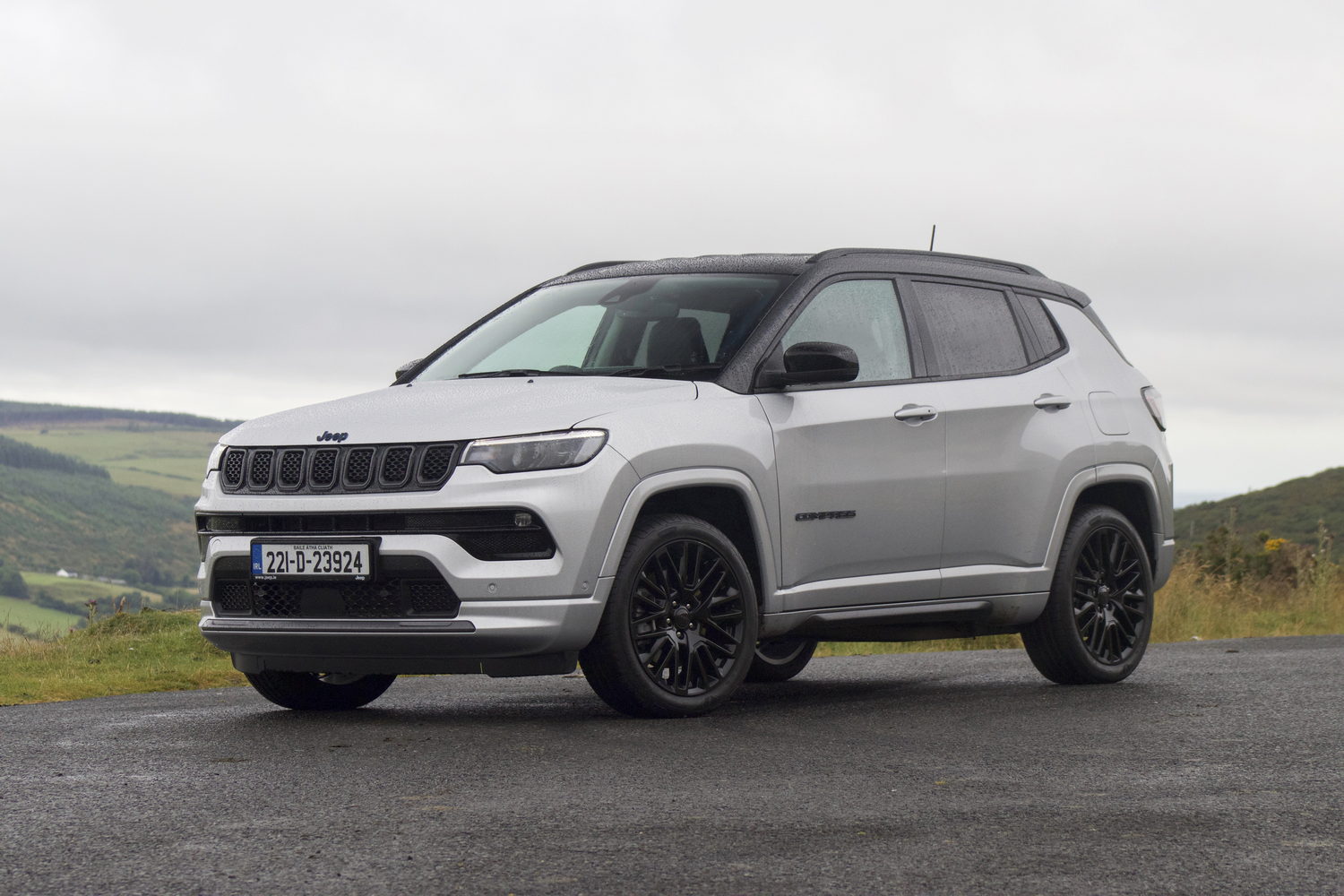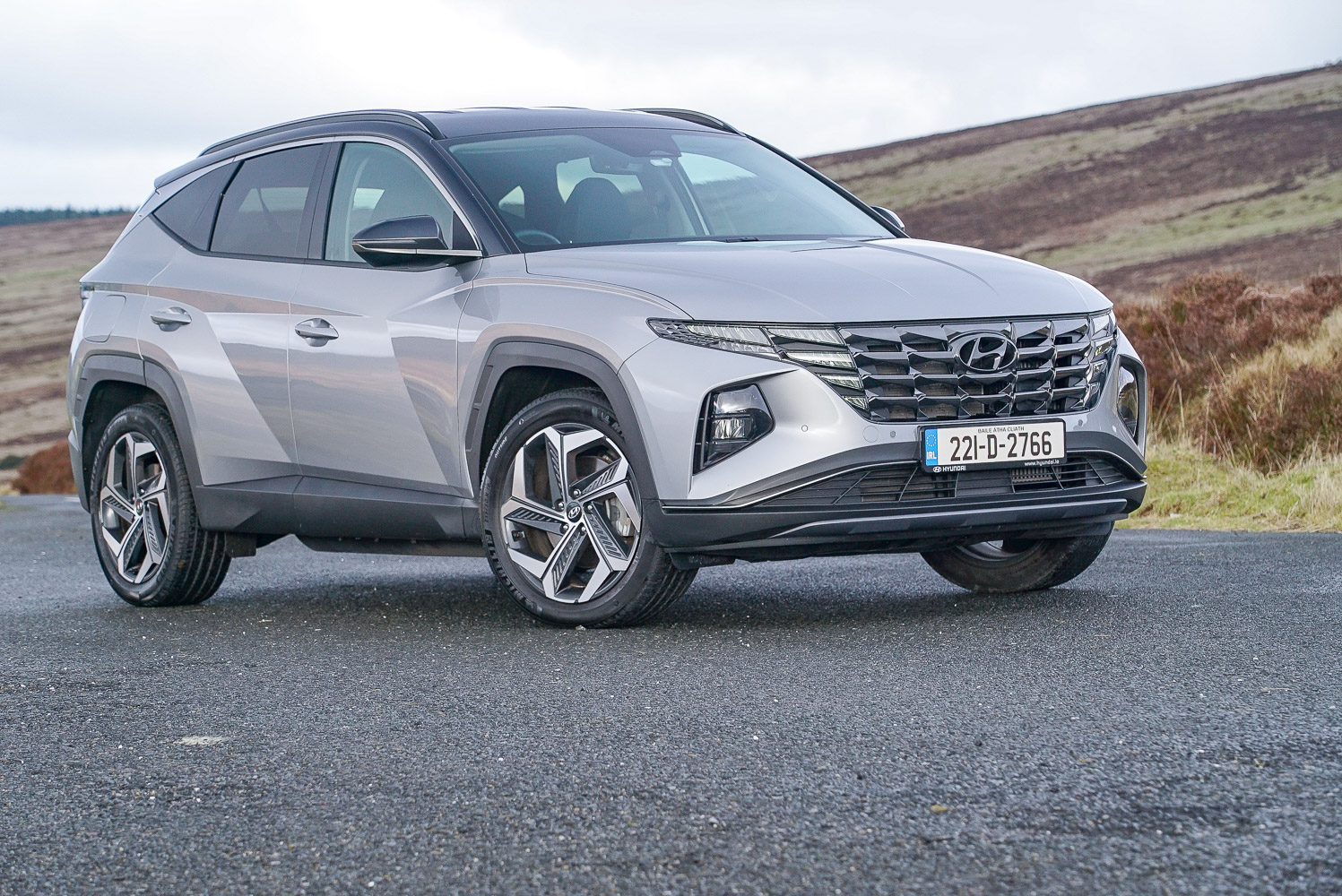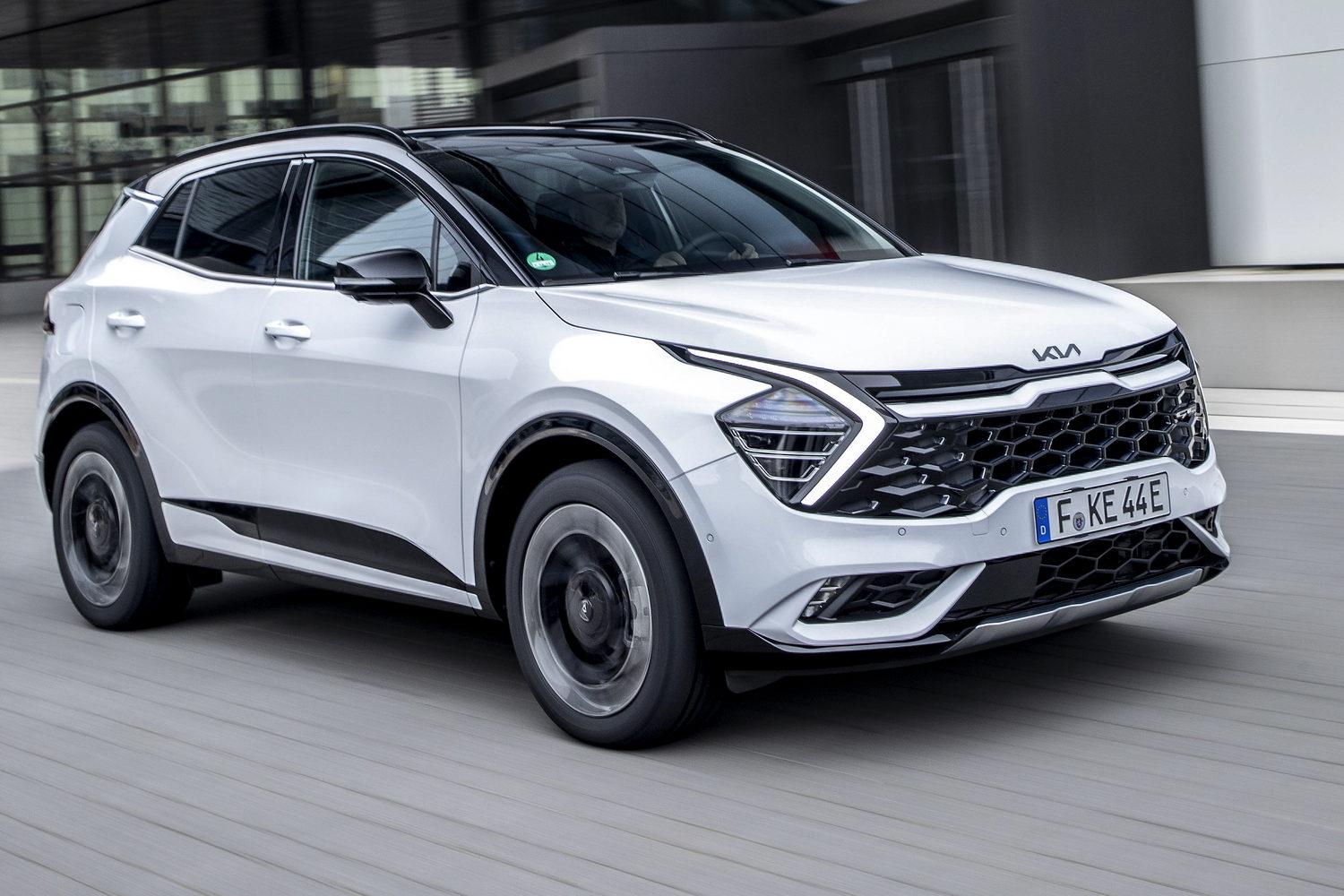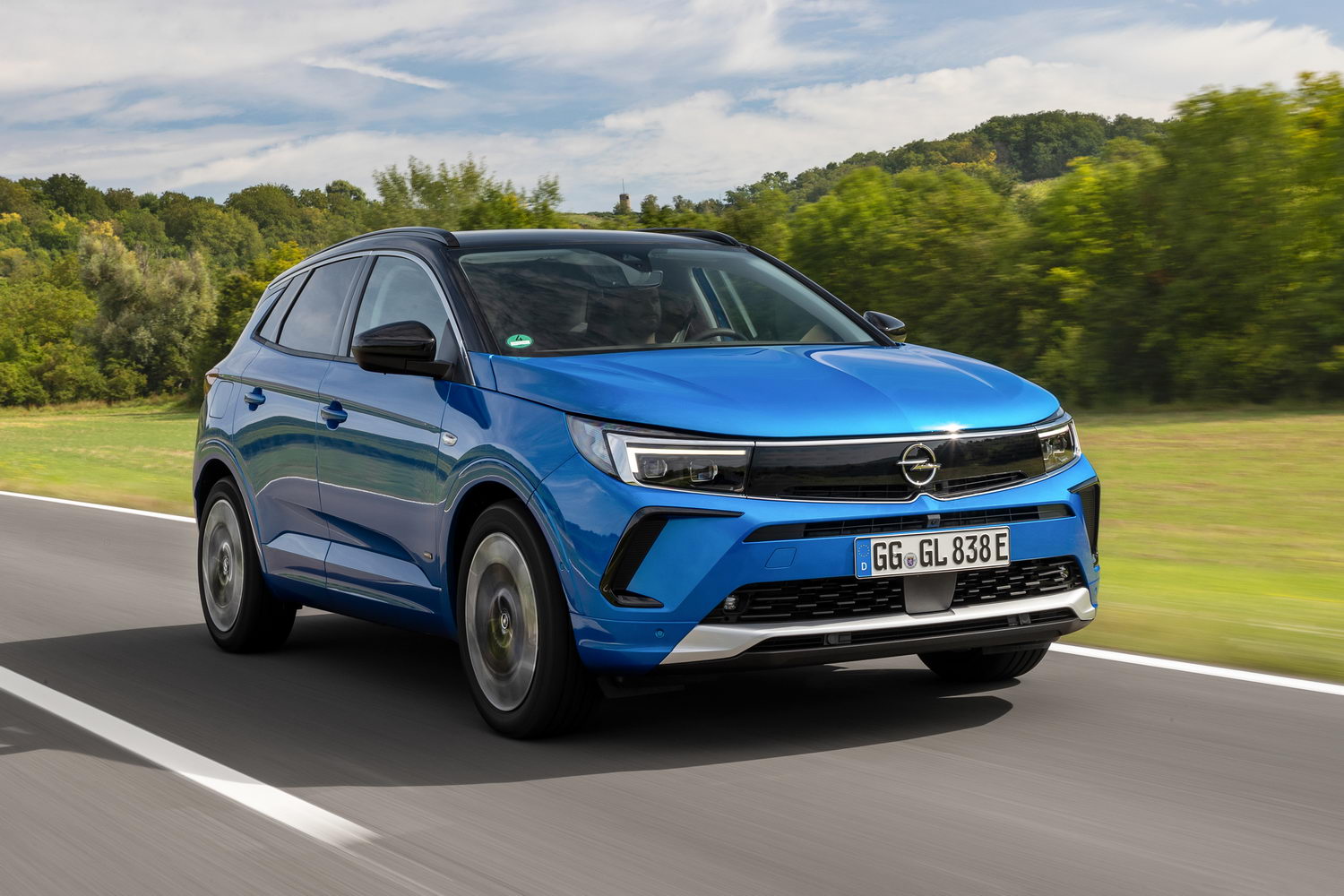Jeep Compass overview
Jeep is a world-famous manufacturer of capable four-wheel-drive vehicles, but the Jeep Compass is one of the more mainstream, family-friendly models that it offers. That's not to say it's not good in the rough stuff, it's just that it's designed it appeal to a wider range of buyers.
The Compass is now in its second generation, which was launched in 2017, while an update at the end of 2021 tweaked the looks, added more safety equipment and introduced a range of more efficient engines, including the plug-in hybrid 4xe model driven here.
In terms of size, the Compass is at the smaller end of the compact SUV sector. It's similar in length to models such as the SEAT Ateca and Skoda Karoq, and is a bit shorter than top-selling cars such as the Hyundai Tucson and Kia Sportage. It's not as long as the Alfa Romeo Tonale, either, a car that uses the same platform as the Compass. And while Jeep is now under the umbrella of the vast Stellantis group, it doesn't really share very much with the Peugeot 3008, Opel Grandland or Citroen C5 Aircross, since these models and the Compass were all developed before the big merger.
The Jeep Compass model range
The Jeep Compass range starts from €43,995, but interestingly there are two powertrain options at this price - a 130hp 1.3-litre turbocharged four-cylinder petrol engine (with a manual gearbox) or a 1.5-litre turbocharged four-cylinder petrol e-Hybrid with the same power output - but connected to a seven-speed automatic. Where these models differ from most people's concept of a Jeep is that they're front-wheel drive.
If you're after four-wheel drive, then the 4xe plug-in hybrid is your sole option. This comes with the manual model's 1.3-litre four-cylinder turbocharged petrol engine, but it's boosted to 180hp, and is joined by a 44kW (60hp) electric motor for a combined maximum output of 240hp. There's a six-speed auto gearbox here, while the electric motor drives the rear wheels exclusively - there's no conventional four-wheel-drive 'transmission' to speak of. Instead you get an 11.4kWh battery to provide power to the electric motor, and this gives the 4xe an official range of up to 52km on electricity alone. The battery can be recharged in as little as one hour and 45 minutes. Prices for the 4xe start from €49,995.
Trim levels start with Night Eagle, and progress through Limited, Upland, S and Trailhawk derivatives. Night Eagle comes with the 130hp engines, and the long standard equipment list includes plenty of gloss black exterior trim, black 18-inch alloy wheels, LED lights all round, heated door mirrors, a heated steering wheel and front seats, keyless entry and starting, two-zone climate control and a rear camera.
Also included is a 10.1-inch 'Uconnect' touchscreen infotainment system. This features Bluetooth, but there's no navigation, although this isn't a great loss because Apple CarPlay and Android Auto mean you can use your smartphone's system instead. There's also a suite of safety equipment, including emergency braking with pedestrian and cyclist detection, intelligent speed assist, lane departure and driver tiredness warnings, tyre pressure monitors and active speed limiter.
Upgrade to Limited trim - which is expected to be the best-seller - and it's available with all three engine choices, and again the 130hp models are listed at the same price. There are diamond-cut 18-inch alloy wheels included, while chrome trim replaces the black detailing of the Night Eagle. Adaptive cruise control, wireless phone charging, Selec-Terrain (a four-mode drive system with Auto, Sand/Mud, Snow and Sport settings), a low-range gearbox mode and hill descent control are also included.
Choose an Upland model, and the black wheels are back, while the silver exterior trim of the Limited is swapped for a 'MetaKrome Bronze' finish. There's also a black contrast roof and bodywork decals. Inside, Seaqual synthetic fabric made from recycled materials is used, there's more MetaKrome trim and navigation is added to the Uconnect system.
The S model bumps up the wheel size to 19 inches, features body-coloured exterior trim, keeps the black contrast roof, adds leather trim and an electrically adjustable driver's seat and there's a powered tailgate, too. Both the Upland and S only come with the e-Hybrid and 4xe powertrains.
Finally, Trailhawk is the name of Jeep's dedicated off-road trim level, and the Compass version only comes in 4xe guise. It's fitted with smaller 17-inch wheels featuring Mud&Snow tyres, off-road bumpers with skid plates front and rear, plus rear tow hooks and 'trail-rated' badges to signify that it's been designed with off-roading in mind. Inside, there's a reversible boot floor and a spare wheel is included (other models just get a tyre repair kit), while the part cloth/vinyl seats have red stitching. Navigation and traffic sign recognition also feature, while the Selec-Terrain system adds a Rock crawl mode.
The Jeep Compass interior
While the Compass isn't the biggest compact SUV currently for sale, that chunky and aggressive looking body actually hides an impressive amount of interior space. It's a bit of a cliché, but it really is Tardis-like in its execution, with that compact body making the Compass easy to manoeuvre around town, but with plenty of space inside for passengers to stretch out. The boot is reasonable, too, measuring 420 litres in five-seat mode, or 1,230 litres with the back seats folded flat.
Jeep has tried to make the Compass feel upmarket, and it certainly has the looks to pull this off, with the upright central touchscreen flanked by twin air vents and the deeply cowled instruments. But the cabin is let down by the hard plastics and feel of the switchgear. On the other hand, there's a ruggedness about the cabin that makes it feel as if it's ready for off-road pursuits, to the extent that it could easily be hosed down after heavy off-road use.
One unique feature of the Compass when compared with its rivals is the emphasis it has on off-road driving. To that end, the 4xe features a toggle switch to the left of the drive selector that allows you to select from the assorted drive modes, as well as setting the low-range function and hill-descent control.
The Jeep Compass 4xe driving experience
There's the feeling of an old-school 4x4 with the Jeep Compass in its design and interior, and that's something that carries over to the driving experience, too. Jeep knows this, and it quotes approach and departure angles of 16.8 and 3.7 degrees, a breakover angle of 22.9 degrees and a wading depth of 406mm - most manufacturers of compact SUVs don't even go as far as mentioning these off-road statistics.
At low urban speeds, there's a bounce to the ride that will be familiar from older SUVs that are more geared towards off-road use, and the Compass is certainly a car worth considering if you're expecting to drive anywhere other than tarmac.
As well as Selec-Terrain modes, the 4xe plug-in offers Hybrid, Electric and E-Save settings for the powertrain. Hybrid is the default mode, and sees the car's electronics judge which power source should take priority, while Electric mode forces zero-emissions running as long as there's enough charge in the battery. E-Save is a setting that switches to petrol drive so that battery energy is saved for later in your journey. For example, if you know that you'll be doing longer distance driving with an urban element towards the end of your trip, then you can save the battery charge for that.
The Compass is at its best in electric mode, where the silent running and quick reactions of the electric motor mean it's refined and responsive, although the whole concept of an electric powertrain does seem at odds with the car's off-road ability. When the petrol engine does fire up, it's not the most refined unit, so if you can prioritise electric drive as much as possible, then the Compass is a nicer machine to spend time with.
Our verdict on the Jeep Compass 4xe
The Jeep Compass isn't your typical compact SUV, but that's what helps it to stand out from the pack. It's not as road-biased as its rivals and really comes across as a junior 4x4, even in this Limited guise, so the Trailhawk model will feel like a properly rugged machine. Plug-in hybrid power doesn't detract from the Compass's off-road intent, and indeed it makes life in urban environs better for all. With a few tweaks to the petrol part of the powertrain it could be a real contender. But even as it stands, the Compass is a refreshing alternative to the default options on the market.


































